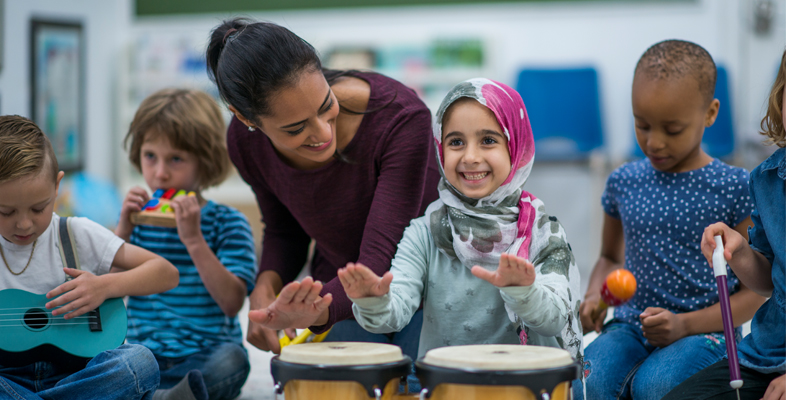5 Further thinking and discussion points
To help you to reflect on your learning you can think about the following questions in light of your reading of this course.
- Why is it important for children to feel that they belong in a new community?
- How do you think the nature of transitions for young children are becoming more complex?
- How can relationships based on listening be maintained over long periods of time?
- Why are some children more likely to be listened to than others?
Activity 5 Quick quiz
This short quiz is intended for you to review your understanding of this course. There are three questions each one relating to a particular section. You may wish to look back over each section before you complete the questions or try answering them first and looking back to review the points if necessary.
- Urie Bronfenbrenner’s ‘ecological systems approach’ contains 4 inter-connected systems. Can you list the names in the space provided? Looking back at Section 1 will help you complete this question.
Answer
- microsystems
- mesosystem
- exosytem
- macrosystem
- Researcher Hilary Fabian (2002) suggests that discontinuities fall into three categories: physical, social and philosophical. Can you match the category to its definition? Use ‘drag and drop’ to do so.
Reviewing Section 2 will help you complete this question.
Using the following two lists, match each numbered item with the correct letter.
Social discontinuity
Philosophical discontinuity
Physical discontinuity
a.change in ethos and values.
b.change in physical environment, size, location, number of people.
c.change in primary and peer relationships
- 1 = c
- 2 = a
- 3 = b
Answer
| Social discontinuity | change in primary and peer relationships |
| Philosophical discontinuity | change in ethos and values. |
| Physical discontinuity | change in physical environment, size, location, number of people. |
a.
objects that mark out where children can go in new settings.
b.
physical items that can be carried between the boundaries of home and setting, and their meanings shared with others.
c.
learning documentation that is shared between settings when children moved.
The correct answer is b.
Answer
physical items that can be carried between the boundaries of home and setting, and their meanings shared with others.
